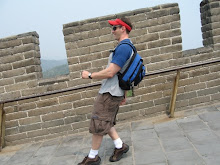
Apparently the Salt Lake City Planning Commission is reviewing the Downtown in Motion plan for Salt Lake City's transportation systems tonight. Below is the coverage the plan got in the Tribune.
Four years in the making, this master plan will help to skew downtown Salt Lakes transportation systems a little more towards people, further away from cars only.
The complete downtown transportation plan can be seen here:
http://www.slcgov.com/transportation/DTP/DTPdefault.htm
Master plan awaits green light
Downtown in Motion, focused on 'condos, lofts and 24-hour downtown living,' goes before panel
Article Last Updated: 06/25/2008 12:44:27 AM MDT
Color-coordinated purple and orange bus routes, two new TRAX loops, glistening green bike lanes - painted nearer the middle of the street - and an end to the bicycle ban on sidewalks.
This trove of transit improvements highlights Salt Lake City's Downtown in Motion transportation master plan, which could clear the Planning Commission tonight.
"It's all focused on the long-range plans for downtown with condos, lofts and 24-hour downtown living," said Tim Harpst, the capital's transportation director. "We're excited."
The first-of-its-kind master plan, in the works since 2006, is the brainchild of six agencies. Downtown's renaissance, Harpst notes, persuaded Salt Lake City's Transportation Division, Redevelopment Agency, the Utah Transit Authority, Utah Department of Transportation, Salt Lake Chamber of Commerce and Downtown Alliance to collaborate.
The diagram focuses on the capital core, which includes a ring from 700 East to Interstate 15 and 900 South to 300 North. If the commission signs off, the City Council could vote in August.
By design, the plan puts a premium on bicycling.
Transit leaders want the city to overturn a decades-old prohibition on pedaling on sidewalks, though pedestrians still would have the right of way. The reversal would require an ordinance rewrite.
"We're going to see more and more families living downtown," Harpst explained, "and there will be people who are more comfortable [riding] on the sidewalk."
Besides casual cruisers, commuters also may benefit.
Late this summer, the city will experiment with a new bike lane by the Gallivan Center on 200 South between State and Main. A "solid swath of green," Harpst notes, the 4-foot-wide path will pierce the middle of the outside lane - not border the gutter - meaning vehicles truly must share the road.
The capital has approval from the Federal Highway Administration to test the lane, which Harpst says could be expanded to other streets.
Officials also hope to connect downtown TRAX trains, though funding questions and the need for environmental studies could push that project beyond 2015.
One route would extend TRAX west along 400 South from Main Street to 600 West, then north to the transit hub. Another would loop light rail from the corner of 200 South and 400 West to its existing bend on 700 South and 200 West.
The connectors offer UTA flexibility on where to send the trains, Harpst says, and "provide coverage for the entire area."
Finally, transit planners want to establish "branded buses" on color-coded lines. One would ferry riders along 200 South from Salt Lake Central hub to State Street. The other line, perhaps orange or purple, would span State Street from 400 South to North Temple Street, then back along 300 West.
The master plan is sure to have the blessing of new Mayor Ralph Becker, who called for both a circular TRAX system and burgeoning bicycle lanes during his campaign.
djensen@sltrib.com


